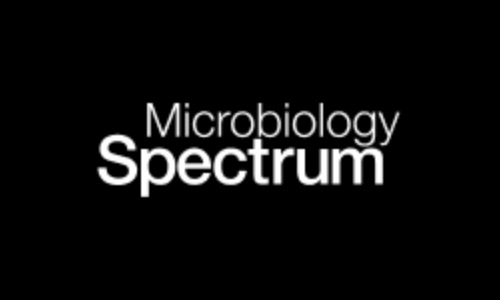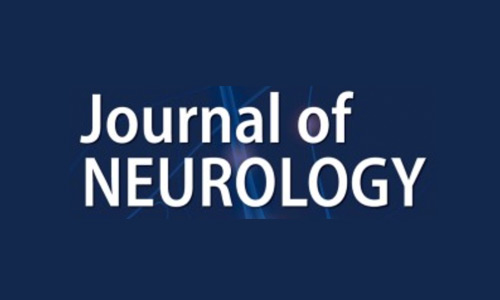- Follow Us
Scientific Publications
High-profile publications featuring CDI Labs next-gen proteomics technologies and services
354 Total Publications
Refine Your Search
Publication Details
- Date
- Link
- + Abstract

AACR - Cancer Research
- Main Product: HuProt
- Development of a first-in-class PDIA6/IRE1 modulator for selectively sensitizing cancer cells to ER stress and regulated cell death
- Wei Jia; Xiaobing Zhang; Bo Kang; Zhao Xu; Chencong Bo; Mingxing Yin; Shujian Ren; Zhengshu Chen; Amar Al-Ansi; Hongban...
- Nain Biotech Co., Ltd.
A high proliferation rate of cancer cells requires increased protein synthesis leading to ER stress, a condition characterized by accumulation of unfolded or misfolded proteins in the ER lumen. Three interconnected Unfolded Protein Response (UPR) pathways, IRE1, PERK, and ATF6 pathways, are activated to relieve ER stress or to initiate apoptosis if prolonged strong ER stress remains unsolved. Thus, the chronically elevated ER stress levels in cancer cells constitute an Achilles’ heel and provide a window of opportunity for development of therapeutic regimens.

Elsevier - Acta Pharmaceutica Sinica B
- Main Product: HuProt
- SAE1 promotes tumor cell malignancy via SUMOylation and liquid–liquid phase separation facilitated nuclear export of p27
- Ling Wang, Jie Min, Jinjun Qian, Xiaofang Huang, Xichao Yu, Yuhao Cao, Shanliang Sun, Mengying Ke, Xinyu Lv, Wenfeng Su,...
- Dept of Hematology, Affiliated Hospital of Nantong University
Most cancers are currently incurable, partly due to abnormal post-translational modifications (PTMs). In this study, we initially used multiple myeloma (MM) as a working model and found that SUMOylation activating enzyme subunit 1 (SAE1) promotes the malignancy of MM. Through proteome microarray analysis, SAE1 was identified as a potential target for bioactive colcemid or its derivative colchicine. Elevated levels of SAE1 were associated with poor clinical survival and increased MM proliferation in vitro and in vivo.

Elsevier - Phytomedicine
- Main Product: HuProt
- Proteomic screening identifies brusatol targets TGFβRII to suppresses non-small cell lung cancer metastasis
- Guo-Sheng Lin, Rou-Qiao Zheng, Zi-Wei Xu, Shang-Ping Xing, Hui-Fei Wu, Youliang Xie, Huicai Huang, Yong-Qiang Liu
- Research Center of Chinese Herbal Resource Science and Engineering, Guangzhou University of Chinese Medicine
Metastasis remains the leading cause of cancer mortality. The natural product brusatol (Bru) has exhibited promising anticancer activity; however, the target proteins of Bru and the underlying mechanisms in suppressing tumor metastasis remain unclear.

Advanced Science
- Main Product: HuProt
- Isoquercitrin Alleviates Diabetic Nephropathy by Inhibiting STAT3 Phosphorylation and Dimerization
- Chen Xuan, Donghui Chen, Shuangna Zhang, Chaofan Li, Qingyun Fang, Dinghua Chen, Jiabao Liu, Xin Jiang, Yingjie Zhang,...
- School of Basic Medical Sciences, Chengdu University of Traditional Chinese Medicine
At the convergence point of multiple cytokine signals, signal transducer and activator of transcription 3 (STAT3) is a highly promising therapeutic target for diabetic nephropathy. Isoquercitrin, a natural small-molecule inhibitor of STAT3, may have beneficial effects on diabetic nephropathy; however, the underlying mechanism remains unclear. Isoquercitrin significantly mitigated renal inflammation and fibrosis by inhibiting STAT3 activity in mice with diabetic nephropathy.

Microbiology Spectrum - ASM Journals
- Main Product: HuProt
- Identification of a mimotope of a complex gp41 human immunodeficiency virus epitope related to a non-structural protein of Hepacivirus previously implicated in Kawasaki disease
- Hakimuddin Sojar, Sarah Baron, Mark D. Hicar
- Dept of Pediatrics, University at Buffalo
Current HIV vaccine strategies are hampered by difficulty with recapitulating heavily mutated broadly neutralizing antibodies. We have previously isolated a highly mutated antibody termed “group C 76-Q13-6F5” (6F5) that uses immunoglobulin heavy chain variable region (VH)1-02. 6F5 targets a conformational epitope on HIV gp41 and mediates Ab-dependent cell cytotoxicity (ADCC). Reverting the group C 76 antibodies’ variable chain to VH1-02 germline in antibody 76Canc showed retained ADCC activity. A vaccine targeting an epitope functionally recognized by germline antibodies offers a distinct advantage.

Journal of Neurology
- Main Product: HuScan
- Exploring autoantigens in autoimmune limbic encephalitis using phage immunoprecipitation sequencing
- Haidara Kherbek, Naveen K. Paramasivan, Surendra Dasari, Carley Karsten, Smathorn Thakolwiboon, Michael Gilligan, Andrew...
- Department of Neurology, Mayo Clinic
To describe the use of high-throughput whole-human proteome phage immunoprecipitation sequencing (PhIP-Seq) in identifying potential antigens for antibody-negative autoimmune limbic encephalitis (ALE).

Molecular Psychiatry
- Main Product: HuProt
- Targeting HINT1 to improve synaptic plasticity: toward loganin as a new antidepressant strategy
- Congyuan Xia, Guoyan Zuo, Manni Wang, Yuming Wang, Yuxuan Guo, Yan Han, Honglin Xiang, Yungchi Cheng, Jiekun Xu, Jun He...
- Institute of Clinical Medical Sciences & Dept of Pharmacy, China-Japan Friendship Hospital
Histidine triad nucleotide-binding protein 1 (HINT1) is related to depression. However, the underlying mechanisms and whether HINT1 is a therapeutic target for depression remain unclear. In this study, we report that loganin, an antidepressant candidate from our previous research, directly targets HINT1 to alleviate depressive-like behaviors. Overexpression of HINT1 in the hippocampus induces depressive-like behaviors.

Nature Communications
- Main Product: HuProt
- High-content screening identifies ganoderic acid A as a senotherapeutic to prevent cellular senescence and extend healthspan in preclinical models
- Li Chen, Bangfu Wu, Li Mo, Huimin Chen, Xingzhu Yin, Ying Zhao, ZhaoYu Cui, Feipeng Cui, Liangkai Chen, Qianchun Deng,...
- Dept of Nutrition and Food Hygiene, Huazhong University of Science and Technology
Accumulated senescent cells during the aging process are a key driver of functional decline and age-related disorders. Here, we identify ganoderic acid A (GAA) as a potent anti-senescent compound with low toxicity and favorable drug properties through high-content screening. GAA, a major natural component of Ganoderma lucidum, possesses broad-spectrum geroprotective activity across various species.

Immunology
- Main Product: HuProt
- Deciphering the IgG Idiotype Network Through Proteomic Analysis of Potential Targets in SARS-CoV-2-Induced Immune Responses
- Nicolle Rakanidis Machado, Beatriz Oliveira Fagundes, Lais Alves do Nascimento, Isabella Siuffi Bergamasco, Fabio da...
- Division of Dermatology, Medical School, University of São Paulo
The association between COVID-19 and autoimmune diseases has gained increasing recognition, yet the specific targets of SARS-CoV-2-induced IgG are currently in focus for several studies. This study aims to explore the proteomic targets of these antibodies and their potential role in autoimmunity. We utilised a human proteome microarray encompassing 23,736 unique proteins, including isoform variants and fragments, as catalogued by the Human Protein Atlas.

Journal of Clinical and Translational Hepatology
- Main Product: HuProt
- Ursolic Acid Modulates Estrogen Conversion to Relieve Inflammation in Metabolic Dysfunction-associated Steatotic Liver Disease via HSD17B14
- Simin Gu, Hui Zhang, Zhekun Xiong, Chong Chen, Junmin Wang, Dan Fang, Yiyuan Zheng and Yong Li
- Dept of Gastroenterology, Shanghai University of Traditional Chinese Medicine
The incidence of metabolic dysfunction-associated steatotic liver disease (MASLD) has been escalating annually, positioning it as the leading cause of chronic liver disease worldwide. Ursolic acid has demonstrated promising therapeutic efficacy in managing MASLD, thereby justifying the need for an in-depth exploration of its pharmacological mechanisms. This study aimed to investigate elucidate the therapeutic mechanisms by which ursolic acid modulates estrogen conversion in the treatment of MASLD.